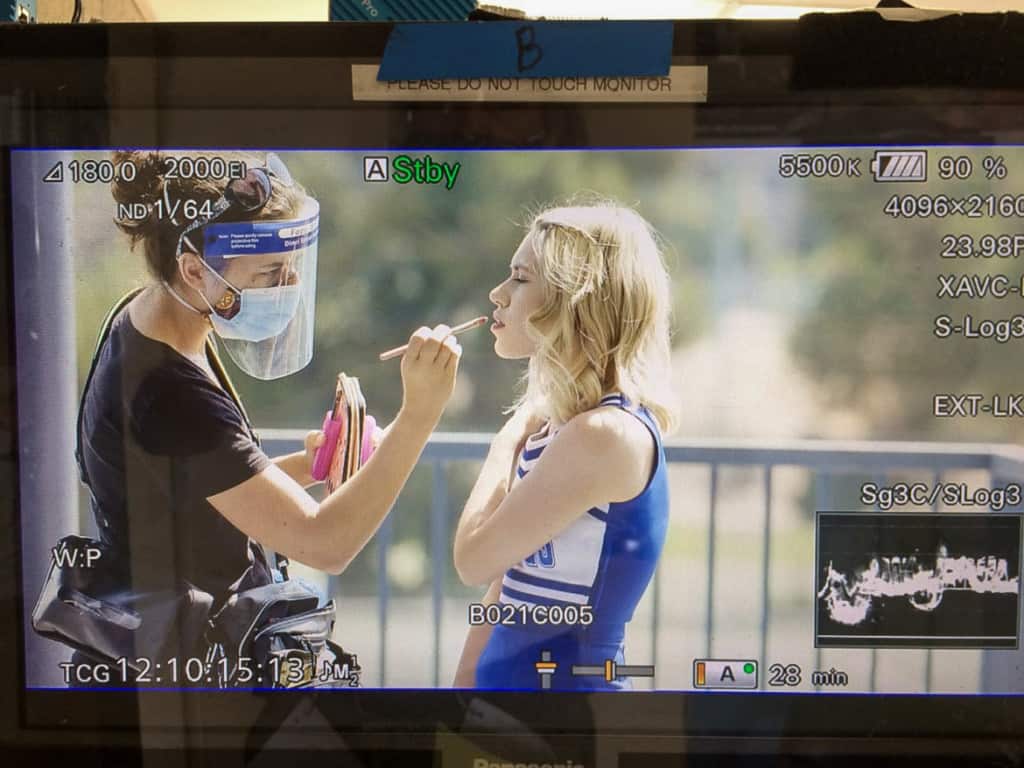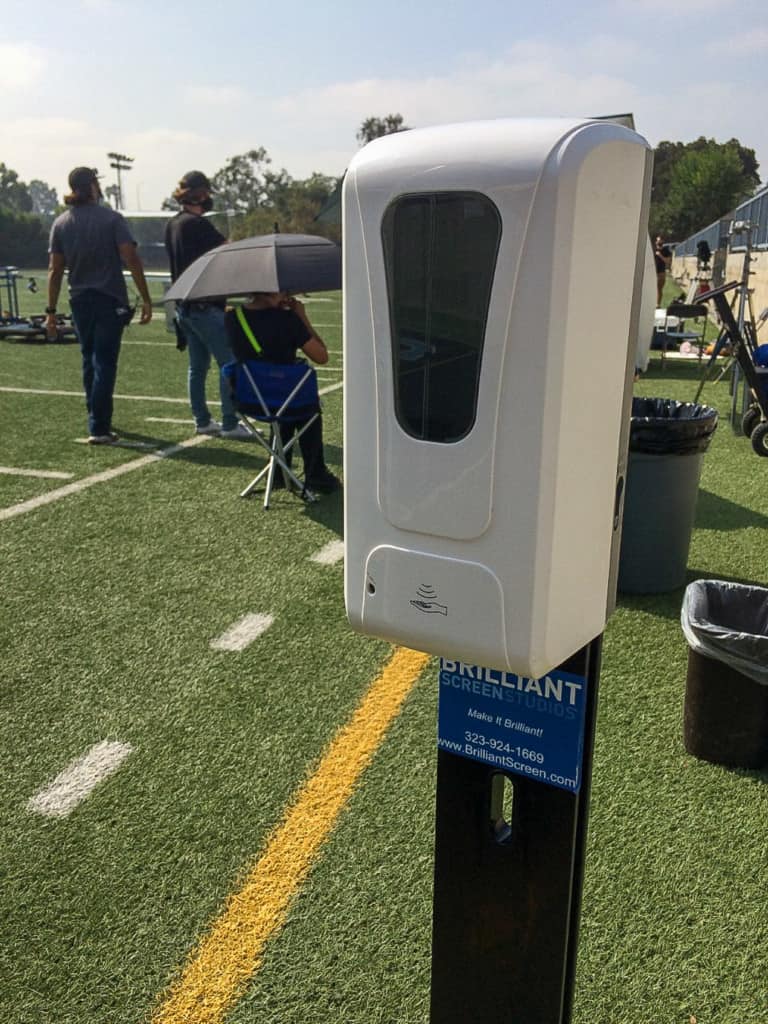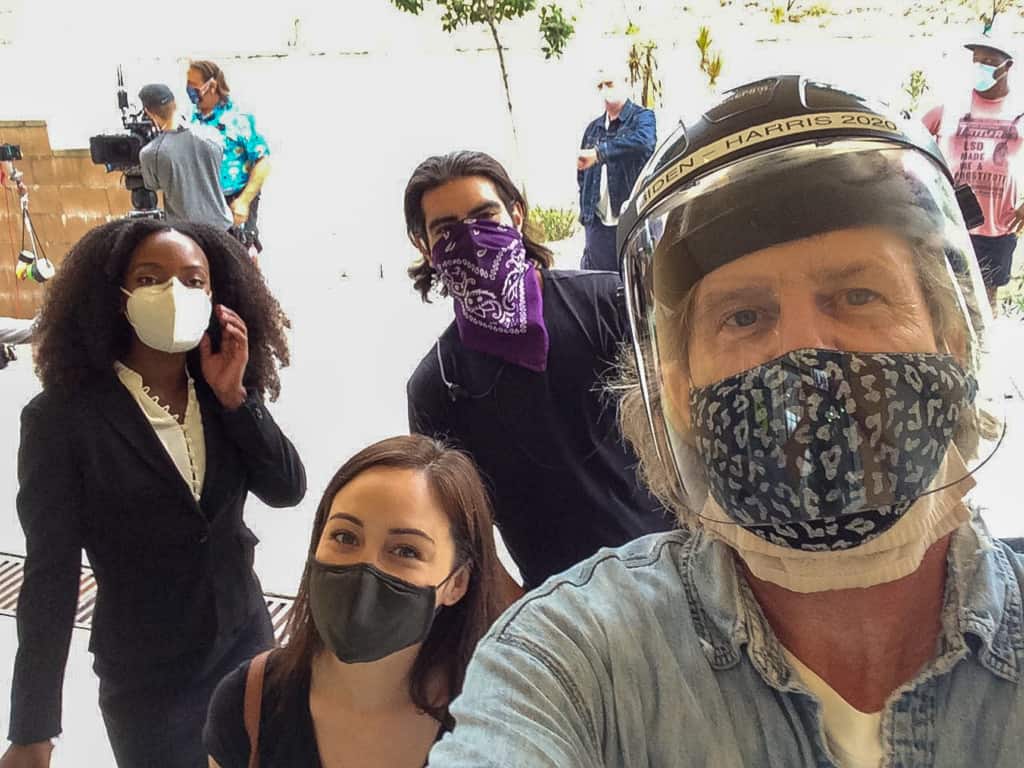Film school students from Academy of Art University kept busy filming even under challenging circumstances during COVID-19. Benefiting from the capable instruction of Doug Campbell, the School of Motion Pictures & Television (MPT) students spent much of 2020 learning how to make a film on the go, despite interference from the pandemic.
MPT Film Projects Face Challenges Head-On
MPT cast and crew had multiple film projects scheduled for 2020, including Healer and Cheerleader Hit Squad. Filming for Healer was underway when production came to a halt due to the California shelter-in-place mandate in the spring.
There was no way at the time to know when, or if, production would begin again, but fortunately, the shelter-in-place orders were lifted by the summer, and work on the film began again. Soon thereafter, Cheerleader Hit Squad began filming as well.

Neither Healer nor Cheerleader Hit Squad had any reference to the pandemic in their original scripts. That’s why as the situation worsened over time, with more stringent New Normal measures being implemented, a lot of the scenes posed challenges to the cast and crew, particularly when it comes to social distancing. In fact, some plot points between characters required direct contact and romantic encounters such as In Cheerleader Hit Squad, for example.
To get around these problems, Doug Campbell re-wrote scripts to make social distancing and outdoor filming easier. “We used lock-offs and post-production wizardry to make it seem as if actors were in close proximity, even though they were quite far apart,” said Campbell.
Campbell further stated: “Fortunately, the story—a high school movie—organically lent itself to be filmed completely outdoors. But per my rewrite, there was no physical touching between the characters. Try to do a high school movie about romance and not have your characters kiss… well, we did it!”
How Filming Changes During a Pandemic
Campbell credits his previous experience working as a screenwriter for enabling him to make these crucial changes to the script at the last minute. Otherwise, it would have taken them a lot longer to adjust, thereby delaying production significantly.
In addition to these important changes, smaller changes were implemented as well. Because of CDC guidance requiring frequent hand-washing, mask-wearing and social distancing, the crew size was reduced dramatically to 16 people. Food for the film crew was wrapped in plastic to protect from potential germs and spreading of COVID-19. Actors were asked to do makeup at home whenever possible to reduce contact between makeup artists and the actors.
The production team also made sure to regularly spray industrial-grade disinfectant in the different locations used, from dressing rooms to offices, and even bathrooms, to ensure that they will avoid contamination. Social distancing was also strictly observed for as much as possible throughout the entirety of the shoot.

Good Instruction Matters in Film
“The [Academy] actors I’ve hired are a) naturally gifted and b) so well-trained by our terrific acting instructors, I don’t have to do much except call ‘action’ and ‘cut,’” Campbell said. This ease in collaboration helped in making these productions easier, all limitations considered.
Academy alumni who took part in the production cannot help but rave about their experience working with Campbell in these film projects. School of Acting alum Mark Haptonstall (2013) played the character of Kyle in Healer, and had this to say about Campbell: “I would take any film audition that Doug sent my way because I trust him so much.”

He also credits the Academy’s state-of-the-art facilities for training him for real work in the industry. “You really have no idea how much you benefit from taking those classes until you’re working professionally on set. The first time I was on a professional stage, it felt like home, because I had those as my classroom.” Art University